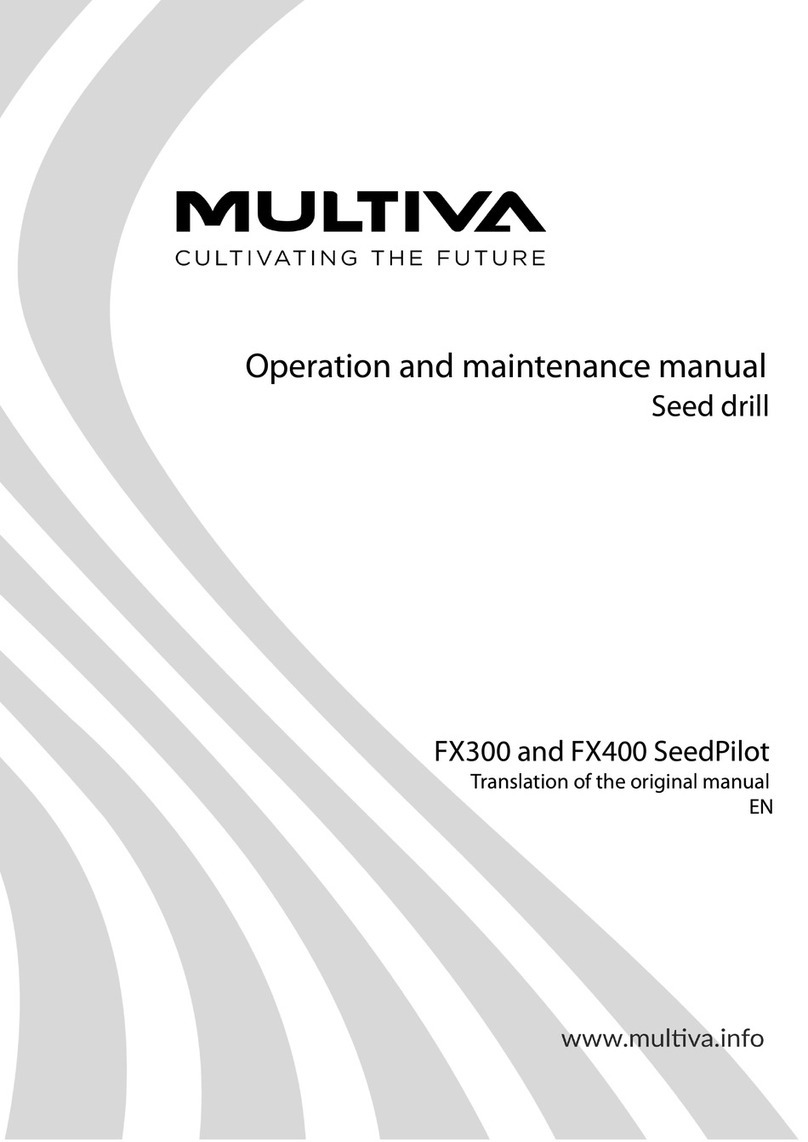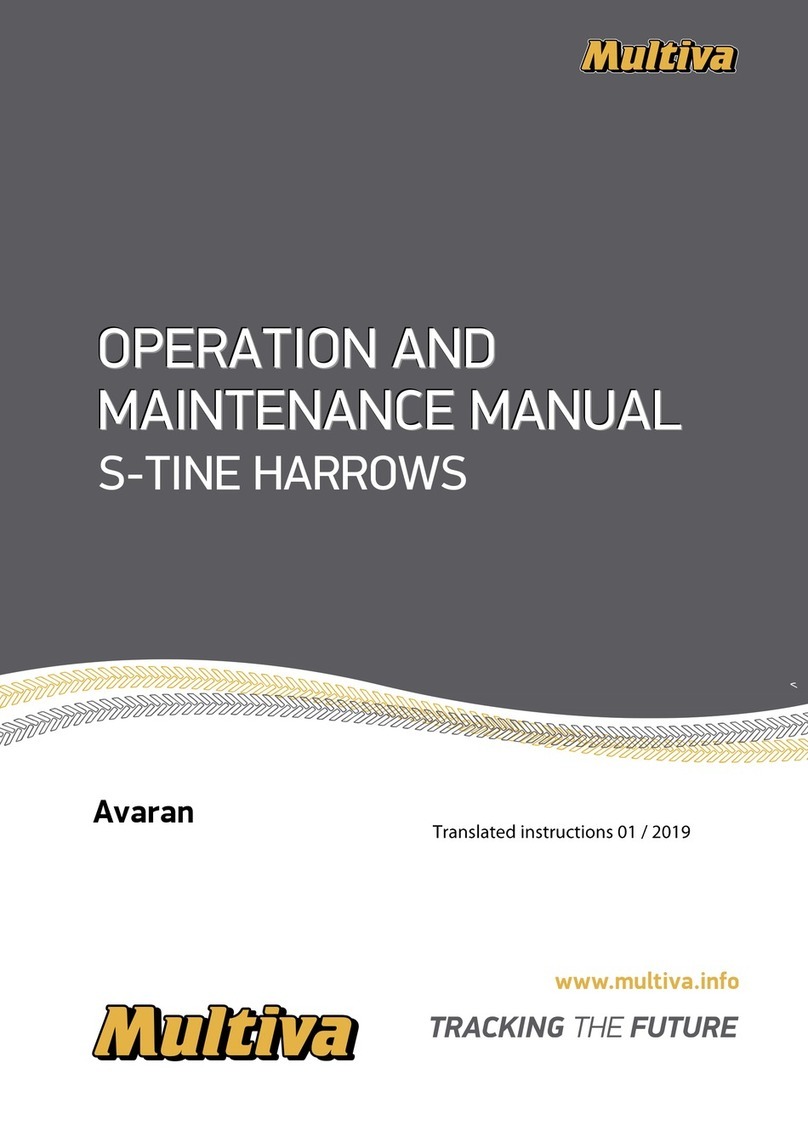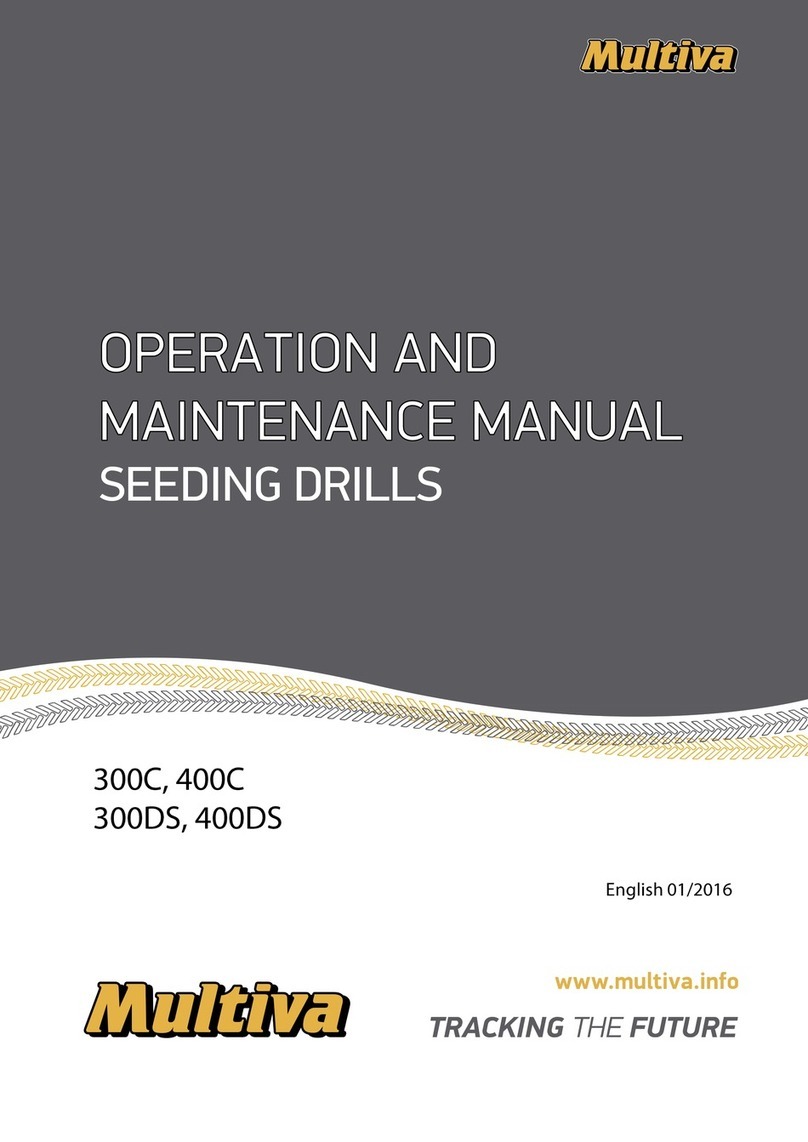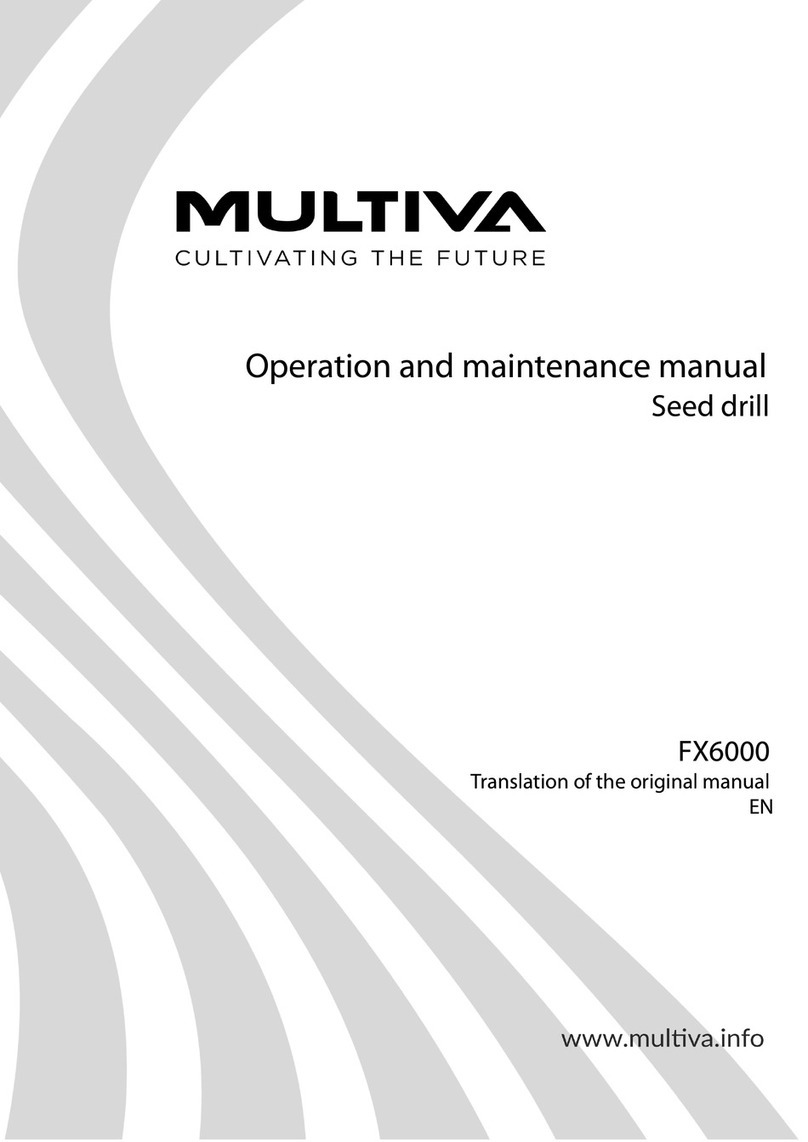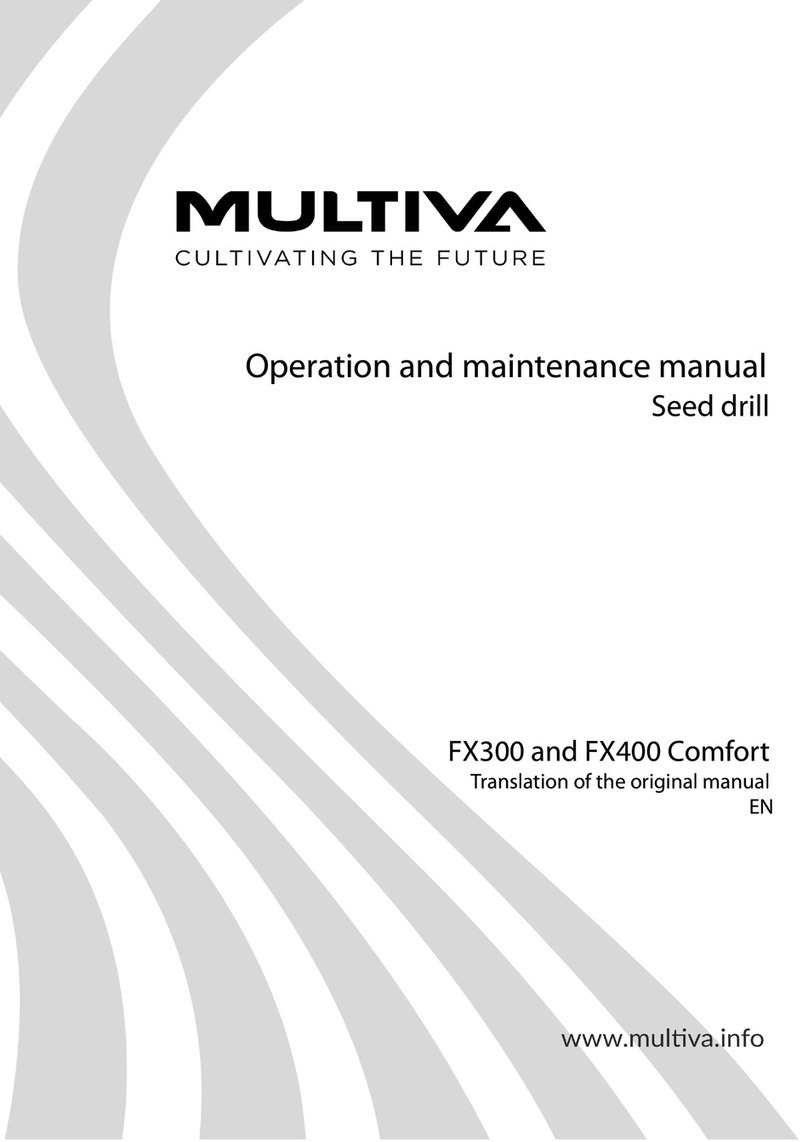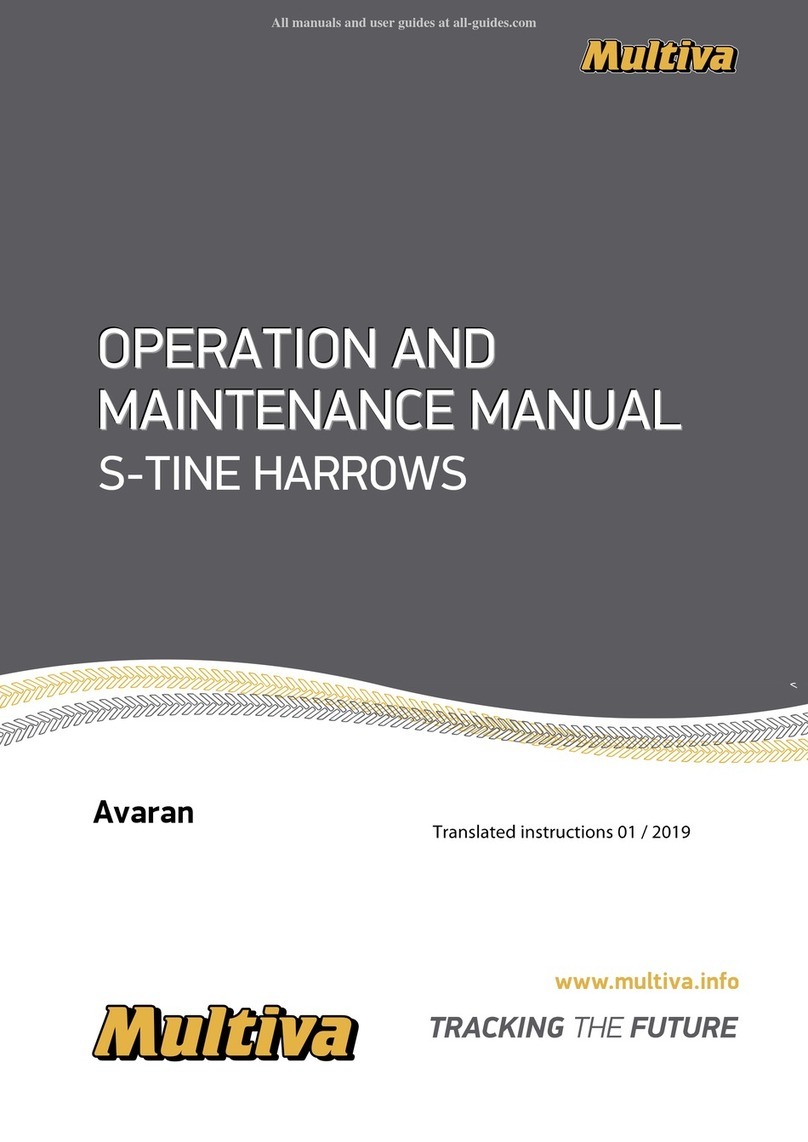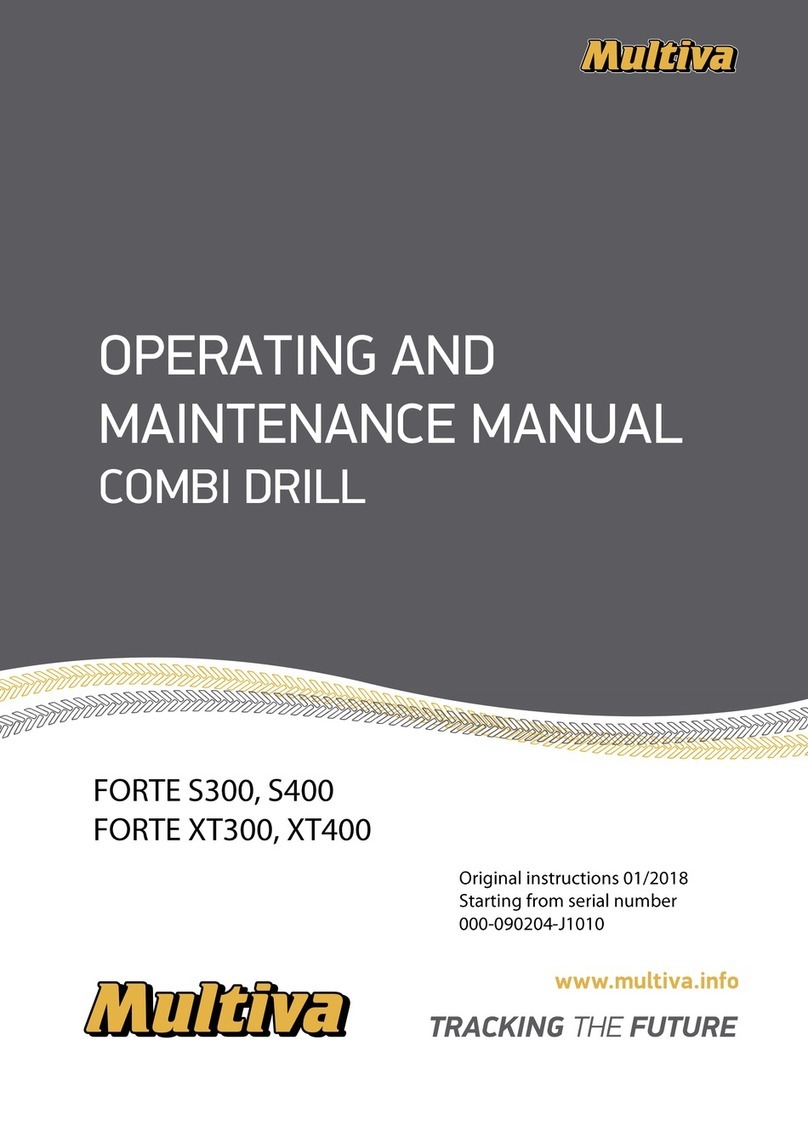1 Foreword
Thank you for trusting us by choosing a high-quality Multiva OPTIMA EVO S-tine harrow. We
hope that you nd the product to meet your requirements and provide years of reliable service.
Please read this manual thoroughly before operating the machine. It is of the utmost importance
that you perform the inspection and maintenance measures specied in this manual to ensure
awless operation of the machine and validity of its warranty.
You must follow all the instructions, warnings and prohibitions related to the use of the machine.
They are provided to ensure operator safety and the long service life of the machine.
1.1 Intended use of the machine
CAUTION
The OPTIMA EVO S-tine harrow must never be used for the primary tillage of
unprepared soil.
The operator of the S-tine harrow must acquaint themselves with the machine and read and
understand the contents of its operating manual before operating the machine. The S-tine
harrow may only be operated when it is in awless technical condition. The S-tine harrow must
be used in accordance with regulations, identifying hazards and following the safety and
operating instructions.
Original Multiva spare parts and accessories are designed for this particular S-tine harrow. The
manufacturer bears no responsibility for spare parts and accessories provided by other
suppliers.
Using them in certain circumstances may weaken the machine and compromise
personal safety.
The Multiva S-tine harrow is designed for the seedbed preparation of soil which has been
primary tilled in the autumn or spring. The Multiva S-tine harrow produces a smooth seedbed
and a sufficiently ne crumb structure, which are the requirements for even and optimal growth,
economically with a minimum amount of harrowing. An S-tine harrow equipped with two
levelling boards can also be used for levelling.
The Multiva OPTIMA EVO is a powerful harrow for various soil types. The spacious frame
structure prevents even the heaviest plant build-up from clogging the harrow. The supporting
wheels ensure a uniform working depth even on soft soil types. The heavy weight and
robustness of the harrow tines also make the harrow suitable for tilling heavy soil. The tilling
power of OPTIMA EVO models can be increased by utilising a rear levelling board or cage roller,
which are available as an option.
Use in accordance with the regulations includes following the operating instructions and
manufacturer's instructions as well as regulations concerning service and maintenance.
Occupational safety regulations concerning agricultural machinery, other rules and regulations
on general safety technology and occupational health as well as traffic rules and regulations
must be followed.
Use of the machine as a mode of transport is not in statutory compliance with
its intended use.
